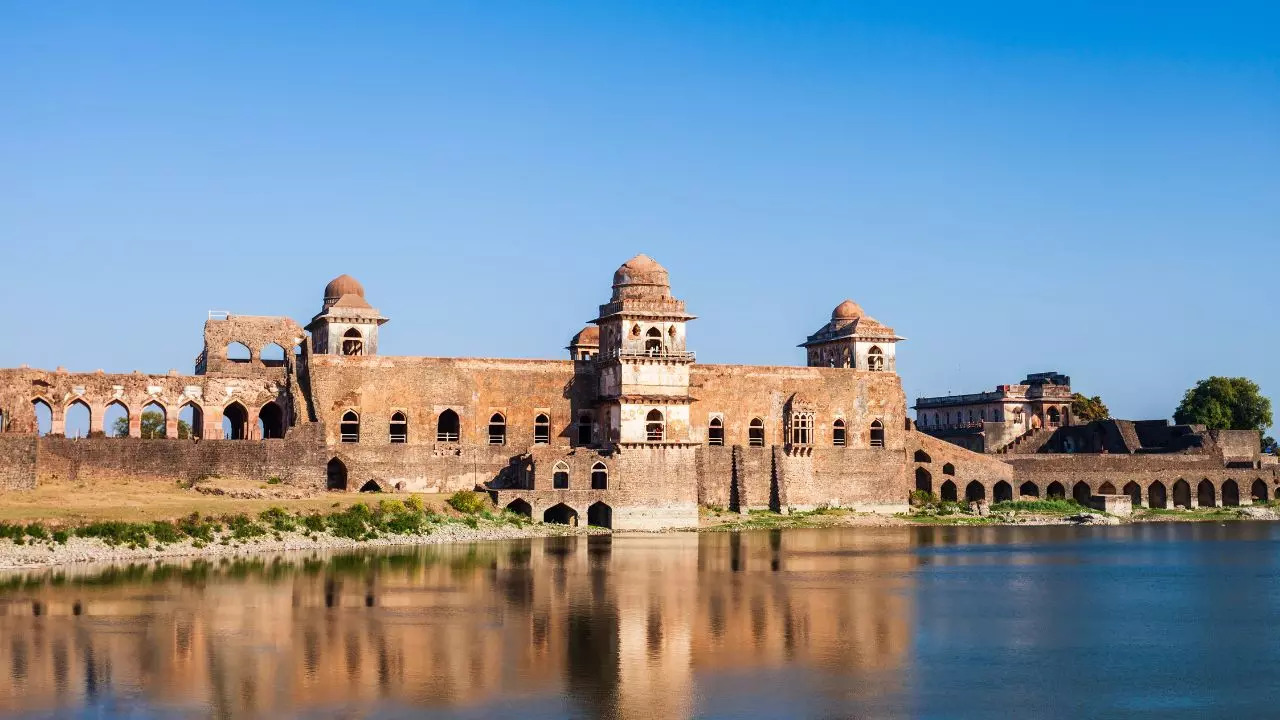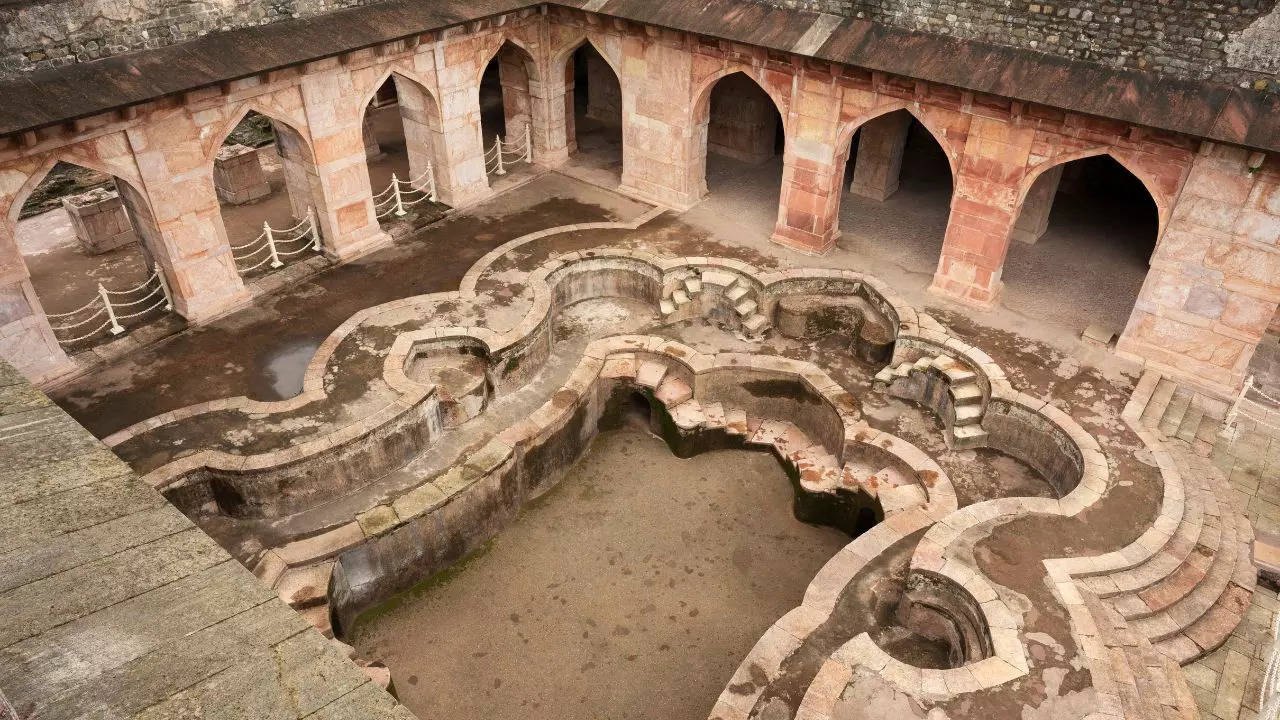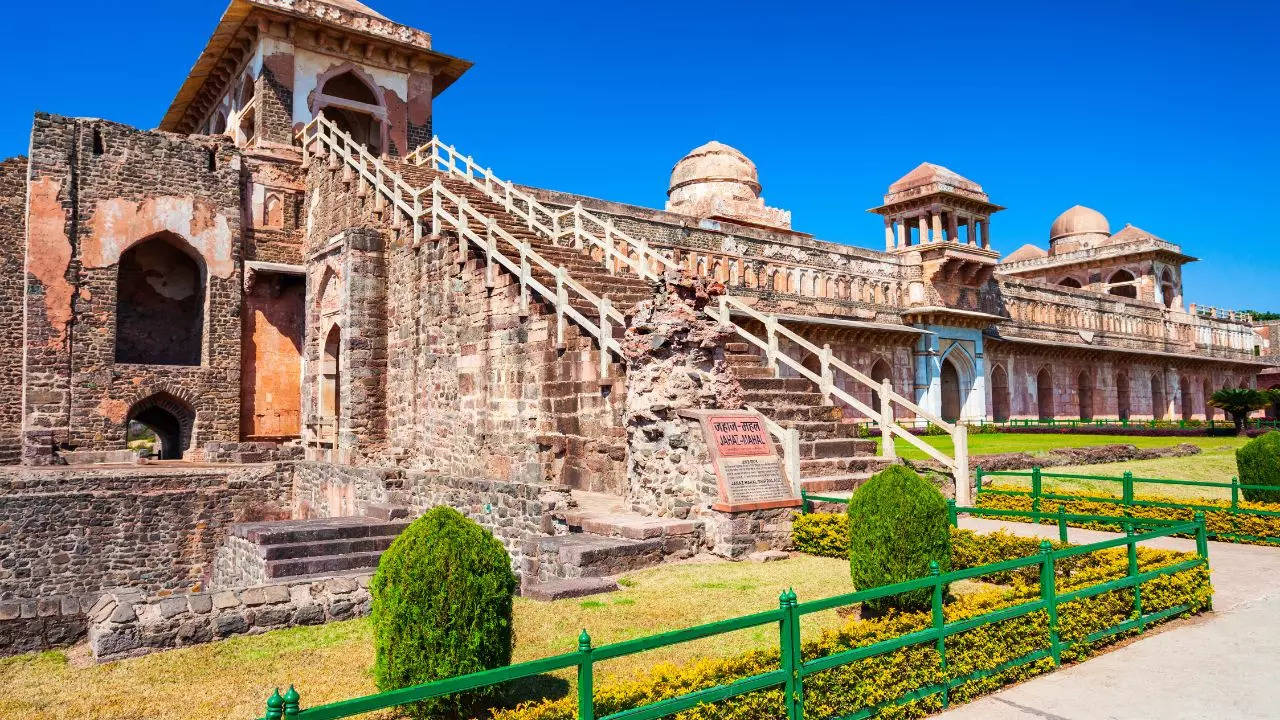
This palace-fortress in Mandu seems to float on water! Credit: Canva
ManduMandava, formerly Mandogarh, is a town in the state of Madhya Pradesh, 60 km from the city of Indore. Nothing could make a bigger difference than the imposing buildings of Indore and this town of Mandu, which was close to oblivion for years before the state government decided to organise a festival highlighting the cultural heritage of the city.
Within this ruined city, the first heritage structure that will catch your eye is the iconic Jahaz Mahal, which translates to “Boat Palace,” built during the 15th century by the Malwa Sultanate.

Jahaz Mahal
The “floating palace” or the boat palace, as it was called when it was built, is located in the middle of the man-made lakes called Kapoor and Munj Sagar Talab, giving it the heavenly view of being afloat. And the story behind this structure is etched in the love story of Sultan Ghiyas-ud-din Khalji and his queen, Rupmati. Rupmati, a famous singer and dancer, was longing for her native Bengal. To fulfill her longing, Sultan Ghiyas-ud-din commissioned the creation of a palace that would reflect the boats and landscapes of her homeland.

Today, it is one of the most elaborate structures preserved from the ruined city and is also inspired by a ship in its construction. A combination of Afghan, Mughal, Hindu and Mesopotamian architectural styles, the monument stands 110 metres tall and is 15 metres wide. Its exterior, adorned with recessed arches and six arched windows, give it its ship-like appearance. There is an artistic and beautiful staircase leading to the upper floor. The interior of the palace, which features three spacious halls connected by a corridor filled with private chambers, was designed keeping in mind the comfort and privacy of women. Another unique aspect of this palace-fortress is the presence of an acoustic water supply system that kept the structure cool during summers. Unlike other Mandu buildings made of lime, mortar and stone, the Jahaz Mahal is built using iron and stone, making it a unique architectural structure in the region.

The Jahaz Mahal was abandoned after the fall of the Mandu Sultanate in the 16th century. Rediscovered in the 19th century by British archaeologist Sir Alexander Cunningham, the palace has undergone extensive restoration and is now a popular tourist attraction in Mandu, and is most visible during the Mandu Festival, when extensive light and sound shows are organised at this heritage site.
How to get to Mandu
The nearest railway station is Indore (94 km) and the nearest airport is Ahilyabai Holkar Airport (94 km).
Jahaz Mahal Timings: 06:00 AM to 7:00 PM
Entrance fees: 5 INR for Indians, 100 INR per person for foreigners.
Disclaimer:
The information contained in this post is for general information purposes only. We make no representations or warranties of any kind, express or implied, about the completeness, accuracy, reliability, suitability or availability with respect to the website or the information, products, services, or related graphics contained on the post for any purpose.
We respect the intellectual property rights of content creators. If you are the owner of any material featured on our website and have concerns about its use, please contact us. We are committed to addressing any copyright issues promptly and will remove any material within 2 days of receiving a request from the rightful owner.
